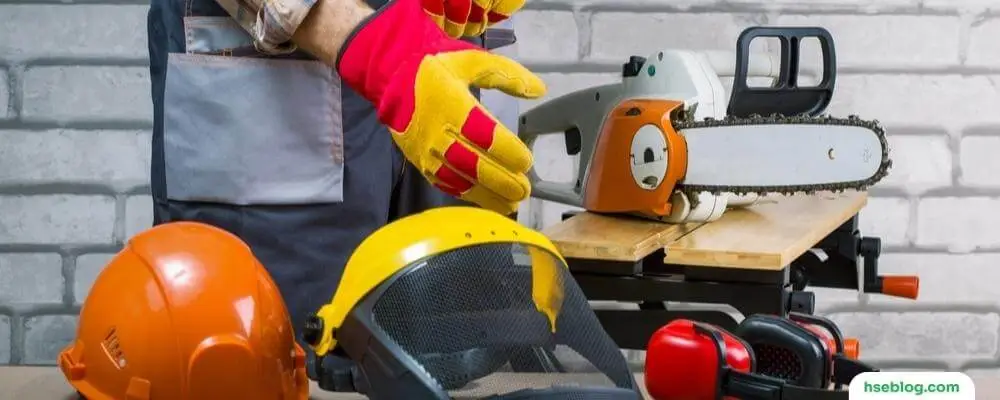In the complex world of occupational health and safety, understanding how to effectively protect employees from potential hazards can be challenging. However, a set of key guidelines, known as the Principles of Prevention, provides a strategic roadmap to achieving a safe and healthy work environment.
These principles, formulated by various regulatory bodies and safety directives, are a critical foundation for any organization looking to create a comprehensive and proactive safety management system. Whether adapting to technical progress, avoiding risks, or developing a coherent overall prevention policy, these principles highlight the importance of preemptive measures and establishing a robust safety culture.
This blog post delves into the 9 Key Principles of Prevention, providing detailed insights into each principle and its practical implications. Whether you are an employer, a safety professional, or an employee, understanding these principles can be pivotal in reducing workplace accidents and enhancing overall productivity. Join us as we unravel these guidelines for shaping safer and healthier workplaces worldwide.
Principles of Prevention
The Principles of Prevention refer to guidelines designed to help employers, managers, and other stakeholders establish and maintain a safe and healthy working environment. These principles, derived from various regulatory bodies and health and safety directives, outline the ideal approach to effectively manage and mitigate risks in the workplace.
These principles aim to prevent accidents and ill health at work by tackling risks at their source and promoting a safety culture. These principles cover various aspects such as risk assessment, adaptation to individual needs and technological changes, and prioritizing collective protection measures.
The Principles of Prevention are fundamental in designing and implementing effective occupational health and safety management systems. Following these principles can lead to a safer, healthier, and more productive workplace, protecting employees from harm and employers from potential liabilities.

9 Principles Of Prevention In Health and Safety
Regarding health and safety, several key principles of prevention are widely recognized and implemented. These principles aim to mitigate risks, prevent accidents, and promote a safe and healthy environment for individuals. Here are nine key principles of prevention in health and safety:
1. Avoiding risks
Avoiding risks is the most proactive step in any health and safety policy. It’s the principle that if a potential risk can be entirely avoided, it should be. This means eliminating the hazard at the source, whether that’s a process, task, or piece of equipment that could potentially cause harm.
Here are a few ways this principle might be implemented:
- Process Alteration: This involves changing how a task is performed so the risk is no longer present. For example, if a manufacturing process produces harmful fumes, an employer could investigate whether there’s a different way to perform the process that doesn’t produce fumes.
- Substitution: Substitution replaces a hazardous material or process with a less dangerous one. For instance, a toxic cleaning chemical could be replaced with a safer, equally effective alternative.
- Automation: In some cases, tasks that pose significant risks to human workers can be automated. This eliminates the risk to human workers and can also increase efficiency.
- Redesign of Workplace: The layout and design of a workplace can significantly impact risk levels. For example, a cluttered storage area might pose a trip hazard. Redesigning this area to eliminate clutter would eliminate this risk.
These examples illustrate the principle of avoiding risks. They emphasize the need to think creatively and proactively about potential hazards and, whenever possible, to eliminate them rather than merely trying to mitigate them.
2. Evaluating the risks which cannot be avoided.
This principle of prevention refers to the necessity of thorough risk assessments for potential hazards that can’t be fully eliminated. While the ideal scenario is to avoid risks entirely, it isn’t always feasible. In such cases, understanding these risks is crucial in mitigating them and preventing harm.
Risk assessment is a systematic process and generally involves the following steps:
- Identify Hazards
- Decide Who Might Be Harmed and How
- Evaluate Risks and Decide on Precautions
- Record Findings and Implement Them
- Review the Risk Assessment and Update if Necessary
Therefore, evaluating unavoidable risks involves identifying them, understanding their potential impact, and taking appropriate precautions to mitigate them. This proactive approach ensures that even when risks cannot be avoided, they can be managed effectively to protect the health and safety of everyone in the workplace.

3. Combating the risks at the source
This prevention principle focuses on managing and controlling risks as close to their origin as possible. This preventative approach is beneficial because it generally provides more effective and long-lasting protection than strategies attempting to protect workers from the consequences of uncontrolled hazards.
Here are a few ways this principle might be implemented:
- Identify the Source: The first step in combating risks at the source is to identify the exact origin of the risk. This could be a piece of machinery, a process, a substance, or any other factor that could cause harm.
- Introduce Controls: Once the source of the risk has been identified, the next step is to introduce controls that directly mitigate or eliminate the risk at its source. This could involve using different materials or processes, improving ventilation, enclosing noisy machinery, or otherwise altering the conditions creating the risk.
- Maintain the Controls: It’s not enough to merely introduce controls. These controls must be maintained to ensure they continue effectively mitigating the risk. This might involve regular inspections, testing, cleaning, or other maintenance activities.
- Monitoring: To ensure the effectiveness of the control measures, it’s important to regularly monitor and reassess the risk. If the control measures do not have the desired effect, revising them or introducing additional controls may be necessary.
This principle emphasizes the importance of proactive and direct risk management. Rather than trying to shield workers from risk, the focus is on eliminating or reducing the risk itself. It aligns with the idea that prevention is always better than cure.
4. Adapting the work to the individual
This principle of prevention refers to the customization of work conditions and processes to meet the needs and capabilities of individual workers, thereby reducing the potential for risk and harm. This principle is grounded in recognizing that workers are not homogeneous and that one-size-fits-all approaches may not be effective or conducive to health and safety.
Here are a few ways this principle might be implemented:
- Workplace Design: This involves designing the physical layout and structure of the workplace to accommodate the needs and abilities of individual workers. For example, adjustable desks and chairs can be provided to ensure workers work comfortably and without strain.
- Work Equipment: The choice of work equipment should consider workers’ specific needs and capabilities. This might involve providing equipment that is ergonomically designed, easy to use, and suitable for the tasks that workers need to perform.
- Working and Production Methods: How work is organized and carried out should also consider individual needs and abilities. This might involve allowing flexibility in work schedules, reducing monotonous tasks, and ensuring that workers are not required to work at an excessively fast pace.
- Consultation: Workers themselves are a valuable source of information about their needs and capabilities. Therefore, consulting with workers when designing workplaces, choosing equipment, and developing work methods is important. This can help ensure that these work aspects suitably meet individual needs.
- Increasing Individual Control: The principle also emphasizes the importance of giving workers a degree of control over their own work. This can reduce stress and make work more satisfying while potentially reducing risks.
- Reducing Monotonous Work: This principle acknowledges the health impact of repetitive, monotonous work and aims to mitigate it. The risk of strain injuries or mental fatigue can be significantly reduced by offering variety and flexibility in tasks or rotating workers between different tasks.
By adapting the work to the individual, organizations create a safer environment and promote better employee engagement and productivity.

5. Adapting to technical progress
This principle of prevention underlines the importance of leveraging technological advancements to improve health and safety in the workplace. As technology evolves rapidly, it presents many opportunities to minimize risks, streamline processes, and enhance overall worker well-being.
Here are a few ways this principle might be implemented:
- Use of Advanced Technology: Modern technology can offer safer and more efficient alternatives to traditional methods and equipment. For example, using robotics can reduce human exposure to hazardous environments. Drones can be used for inspections in high or otherwise dangerous locations, reducing the need for workers to be exposed to such risks.
- Automation: Many tasks traditionally performed manually, often with a significant risk of error or injury, can now be automated. This reduces the risk of human error and protects workers from repetitive or physically demanding tasks that could cause injury over time.
- Real-Time Monitoring and Predictive Analytics: Advanced technologies can provide real-time monitoring of various factors related to health and safety, like air quality, noise levels, or machinery conditions. Predictive analytics can help identify potential risks before they become actual issues, thereby enhancing prevention measures.
- Information and Communication Technology (ICT): ICT can facilitate better workplace communication, information sharing, and training. For example, virtual reality (VR) can be used for immersive and realistic safety training. At the same time, platforms for incident reporting and risk management can streamline these crucial aspects of health and safety management.
- Global Best Practices and Standards: The internet and other information sources make accessing information about best practices and standards worldwide easier than ever. Employers are expected to stay up-to-date with these developments and incorporate relevant advancements into their health and safety strategies.
- Continuous Learning and Adaptation: With technology constantly evolving, organizations must foster a continuous learning and adaptation culture. This involves staying informed about new technologies and assessing their potential benefits for health and safety.
This principle emphasizes that technology should be seen as a tool for improving health and safety. However, it’s also crucial to remember that technology is a means to an end, not an end in itself. The ultimate goal should always be to promote health and safety, and technology should be used in ways that support this goal.
6. Replacing the dangerous with the non-dangerous or the less dangerous
The principle of “Replacing the dangerous with the non-dangerous or the less dangerous” focuses on substituting high-risk elements in the workplace with alternatives that pose a lower risk or no risk at all. This strategy is primarily based on the understanding that reducing exposure to hazardous elements effectively lowers the risk of accidents or health issues.
Here are a few ways this principle might be implemented:
- Hazardous Substances: In many workplaces, hazardous substances such as toxic chemicals, carcinogens, or volatile compounds are used. Whenever possible, these should be replaced with non-hazardous or less hazardous alternatives. For example, a cleaning solution with harmful fumes could be replaced with a non-toxic and equally effective solution.
- Equipment and Machinery: Equipment and machinery that pose a high risk of injury should be replaced with safer alternatives. For instance, a machine without adequate safety guards could be replaced with a model with this safety feature. Or, a tool that requires a high degree of manual force could be replaced with a powered tool that reduces physical strain.
- Processes and Tasks: Certain work processes or tasks may inherently carry high risk. If these cannot be eliminated, they should be replaced with safer procedures. For instance, working at height is inherently risky. If a task can be accomplished at ground level or with equipment like drones, the risk of falls can be substantially reduced.
- Monitoring and Evaluation: After replacing a dangerous element, it’s important to continually monitor and evaluate the safety of the substituted element. While it may be less hazardous, it may introduce new risks that must be managed.
This principle emphasizes the importance of maintaining an ongoing commitment to risk reduction. By seeking out and implementing safer alternatives, employers can significantly reduce the likelihood of accidents and health issues in the workplace.

7. Developing a coherent overall prevention policy
The principle of “Developing a coherent overall prevention policy” underscores the importance of having a comprehensive, organization-wide approach to managing health and safety. This policy should be consistent and clear and encompass all aspects of the workplace, from technology and work organization to social relationships and working conditions.
Here are a few ways this principle might be implemented:
- Holistic Approach: A coherent overall prevention policy is holistic. It recognizes that all elements of the workplace—physical, psychological, organizational, and social—interact and can influence worker health and safety. It, therefore, strives to manage all these aspects in an integrated way.
- Policy Development: The development of the policy should involve a thorough assessment of all the risks and hazards in the workplace, as well as input from all levels of the organization, including management and workers. The policy should set clear objectives and strategies for managing health and safety.
- Applying Technology: Technology is key in modern health and safety management. The policy should outline how technology will enhance safety, such as through real-time hazard monitoring or by using safer equipment and machinery.
- Organization of Work: The way work is organized can have a significant impact on health and safety. The policy should cover work schedules, task allocation, and workflow design to reduce stress, fatigue, and other health risks.
- Working Conditions and Social Relationships: Physical working conditions and the social environment are crucial to worker well-being. The policy should, therefore, address issues like ergonomics, cleanliness, noise levels, and workplace culture.
- Implementation and Review: Once the policy is developed, it must be effectively implemented and communicated throughout the organization. It should also be reviewed and updated regularly to remain relevant and effective.
This principle emphasizes the importance of a proactive and strategic health and safety management approach. Rather than dealing with health and safety issues piecemeal or reactive, it’s about having a comprehensive policy that guides consistent and effective action across the organization.
8. Giving collective protective measures priority over individual protective measures
The principle of “Giving collective protective measures priority over individual protective measures” underlines the importance of implementing safety measures that protect everyone in the workplace rather than solely relying on individual protective equipment or actions. This approach believes in controlling the risks at their source and creating a safe environment or ‘Safe Place’ for all.
Here are a few ways this principle might be implemented:
- Collective Protection: Collective protective measures are designed to protect all individuals in a workplace from a particular risk. These measures often involve changes to the work environment or processes that reduce or eliminate the risk for everyone. For example, installing effective ventilation systems to control airborne contaminants benefits all workers in the vicinity, not just those directly involved in a specific task.
- Proactive vs. Reactive: Collective protective measures are often more proactive, dealing with hazards at their source, whereas individual protective measures can be more reactive, shielding the individual from the hazard rather than removing it. For instance, it is more effective to prevent the release of a toxic substance into the work environment (collective protection) than to supply workers with personal protective equipment (PPE) to shield them from the toxin (individual protection).
- Efficiency and Effectiveness: Collective measures are often more efficient and effective in the long term. They require less monitoring and administrative control, reduce the reliance on individual behaviors, and are less likely to be affected by potential issues with the correct use or fit of PPE.
- Hierarchy of Controls: This principle is closely related to the “hierarchy of controls” in occupational health and safety. This hierarchy prioritizes control methods based on their effectiveness; eliminating the hazard at the source is the most effective, followed by substitution, engineering (often collective), administrative controls, and personal protective equipment.
However, while collective measures should be the priority, it’s important to note that individual measures still play a critical role in a comprehensive health and safety strategy. In many cases, combining both will be necessary to manage risks effectively. For instance, individual protections such as PPE may still be necessary when a hazard cannot be fully controlled through collective measures.

9. Giving appropriate instruction to employees
The principle of “Giving appropriate instruction to employees” revolves around the concept that knowledge and awareness are critical to safety in the workplace. Also known as the ‘Safe Person’ approach underscores the importance of equipping each worker with the necessary information, training, and skills to work safely.
Here are a few ways this principle might be implemented:
- Training and Education: A significant part of implementing this principle is providing regular and comprehensive employee training. This can range from basic safety orientations for new hires to specialized training for specific roles or tasks. Training should cover safe work procedures, how to use protective equipment correctly, what to do in an emergency, and how to recognize and report hazards.
- Communication of Policies and Procedures: Clear and consistent communication of safety policies, procedures, and expectations is crucial. Employees need to understand what they should do and why it matters. Effective communication also includes giving employees feedback on their performance and allowing them to voice their concerns or suggestions.
- Access to Information: Employees should easily access important safety information, such as the results of safety inspections, incident reports, and risk assessments. They should also be informed about changes in work practices or processes that might affect their safety.
- Legal and Regulatory Compliance: This principle ensures employees understand their work’s legal and regulatory requirements. This can help ensure compliance and give employees a clearer understanding of the standards they are expected to uphold.
- Balancing Safe Place and Safe Person Approaches: While the Safe Person approach focuses on the individual, it’s important to remember that it works hand in hand with the Safe Place approach, which is about controlling environmental risks. A well-rounded safety management system will strike a balance between these two approaches.
In summary, this principle highlights individuals’ crucial role in maintaining a safe and healthy workplace. By providing appropriate instruction, employers can empower employees to act safely and responsibly, reducing the likelihood of accidents and injuries.
Conclusion
In conclusion, these principles are a strategic blueprint for creating safer and healthier work environments. These principles encompass various preventive measures ranging from risk avoidance and assessment to incorporating technological advances and prioritizing collective protection.
A comprehensive understanding and application of these principles enable organizations to foster a proactive safety culture, reducing workplace accidents and improving overall productivity. As we adapt to an ever-evolving work landscape, these principles continue to play an essential role in guiding our approach to occupational health and safety, ensuring the well-being of employees across industries.

